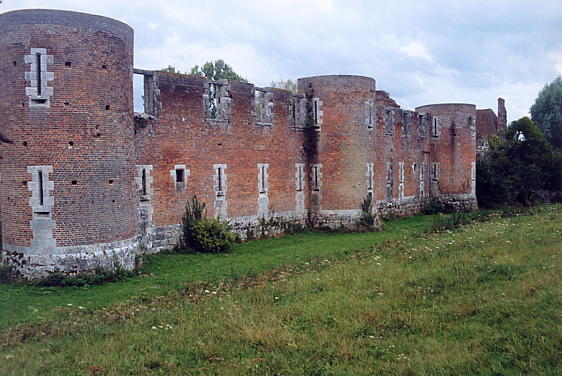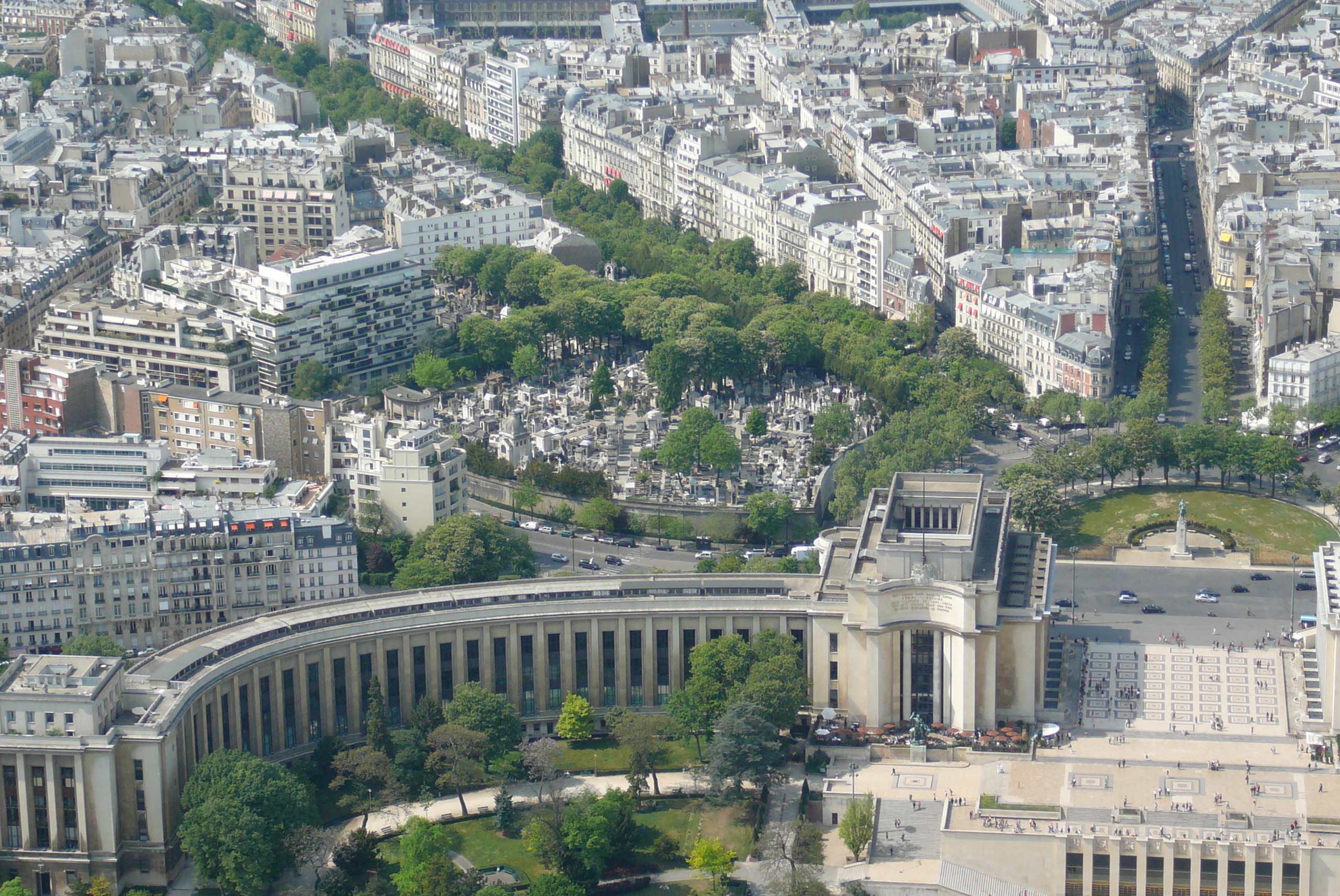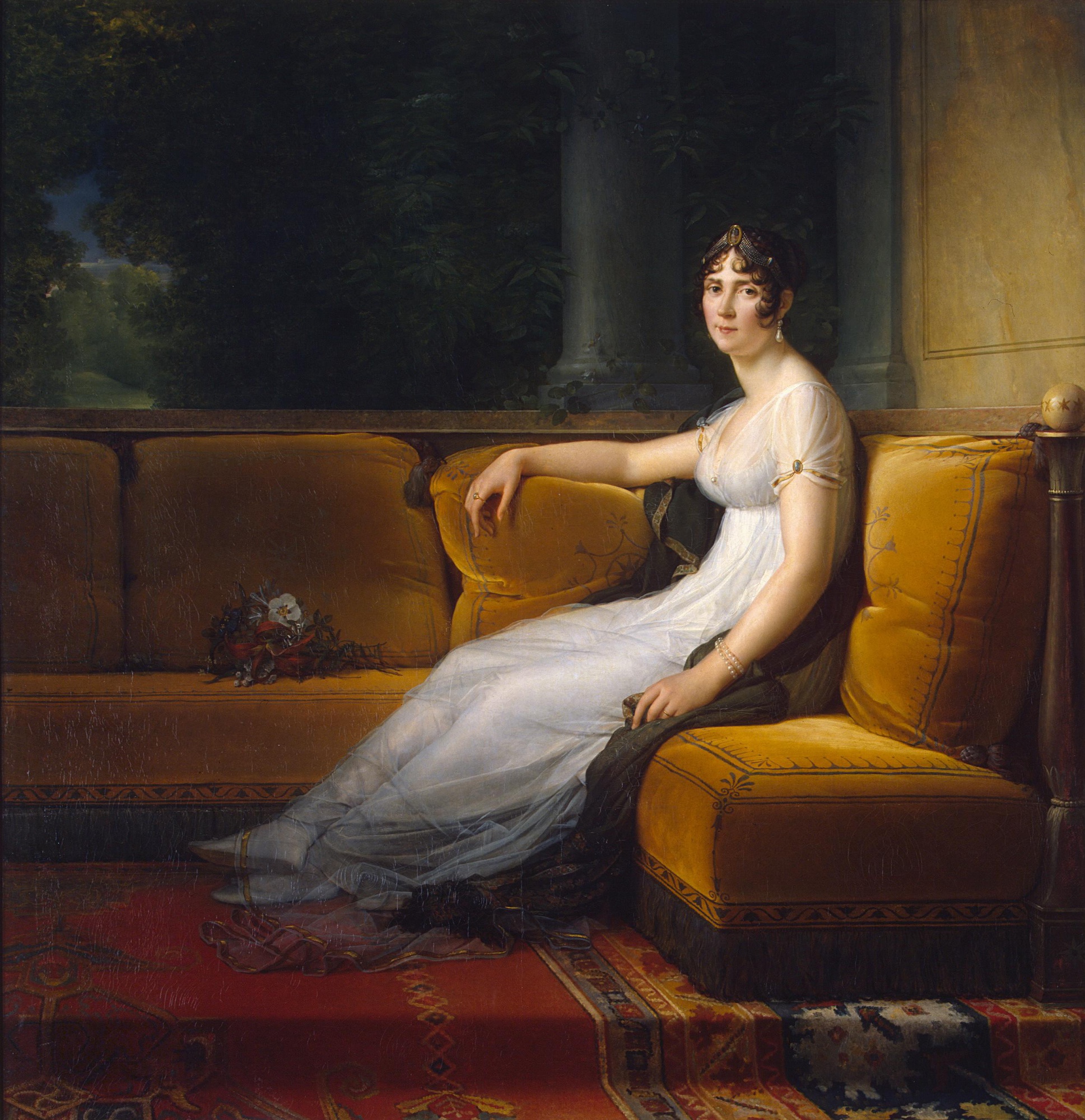|
Pierre Humbert (architect)
Pierre Humbert (1848–1919) was a French architect. Works Humbert was born in Uckange to a noble family. He built many buildings and "hôtels particuliers" (private homes) in Paris and other European cities, such as Brussels for the aristocracy and the upper class of the time, such the prince of Caraman-Chimay, the duke des Cars or the Schneider family. He especially built many buildings in the Champs-Elysées area and in the 16th arrondissement of Paris. He is the father of the French architect Maurice Humbert, with whom he restored many castles, including Napoléon's Château de Malmaison. See also Place des États-Unis The Place des États-Unis (; "United States Square") is a public space in the 16th arrondissement of Paris, France, about 500 m south of the Place de l'Étoile and the Arc de Triomphe. It consists of a plaza, approximately long and wide, tre ... Sources * Françoise Talon, « Les palaces », in ''Les Champs-Élysées et leur quartier'', Par ... [...More Info...] [...Related Items...] OR: [Wikipedia] [Google] [Baidu] |
Architect
An architect is a person who plans, designs and oversees the construction of buildings. To practice architecture means to provide services in connection with the design of buildings and the space within the site surrounding the buildings that have human occupancy or use as their principal purpose. Etymologically, the term architect derives from the Latin ''architectus'', which derives from the Greek (''arkhi-'', chief + ''tekton'', builder), i.e., chief builder. The professional requirements for architects vary from place to place. An architect's decisions affect public safety, and thus the architect must undergo specialized training consisting of advanced education and a ''practicum'' (or internship) for practical experience to earn a Occupational licensing, license to practice architecture. Practical, technical, and academic requirements for becoming an architect vary by jurisdiction, though the formal study of architecture in academic institutions has played a pivotal role in ... [...More Info...] [...Related Items...] OR: [Wikipedia] [Google] [Baidu] |
Château Du Hallier
The Château du Hallier is a castle in the ''Communes of France, commune'' of Nibelle in the Loiret ''Departments of France, département'' of France. History The date of construction is not known precisely. It is recorded in the 15th century in deeds of sale. The castle was sold to Charles de l'Hospital in 1537. In the 18th century, the castle was used as a quarry; the square second floor disappeared. In the 19th century, the castle became a farm. One of the towers housed a potter's kiln until the early 20th century. The castle is privately owned. It has been listed since 1967 as a ''monument historique'' by the French Ministry of Culture. See also *List of castles in France References External links * Castles in Centre-Val de Loire Loiret Monuments historiques of Centre-Val de Loire {{France-castle-stub ... [...More Info...] [...Related Items...] OR: [Wikipedia] [Google] [Baidu] |
Uckange
Uckange (; german: Ückingen; Lorraine Franconian: ''Ickéng''/''Ickéngen'') is a commune in the Moselle department in Grand Est in north-eastern France. The inhabitants are called ''Uckangeois''. Population Notable residents * Carmelo Micciche * Stéphane Haar Geography Climate The local climate is mild with few extremes of temperature and ample precipitation in all months. The Köppen Climate Classification subtype for this climate is " Cfb" (Marine West Coast Climate). Many areas have rainfall more than 150 days per year, although the precipitation is often of low intensity. Fog is common in autumn and winter, but thunderstorms are infrequent. Strong gales with high winds may be encountered in winter. Temperatures in the winter tend to be mild, while summer temperatures are moderate. See also * Communes of the Moselle department * List of preserved historic blast furnaces This list of preserved historic blast furnaces contains decommissioned blast furnaces, of which sub ... [...More Info...] [...Related Items...] OR: [Wikipedia] [Google] [Baidu] |
Paris
Paris () is the capital and most populous city of France, with an estimated population of 2,165,423 residents in 2019 in an area of more than 105 km² (41 sq mi), making it the 30th most densely populated city in the world in 2020. Since the 17th century, Paris has been one of the world's major centres of finance, diplomacy, commerce, fashion, gastronomy, and science. For its leading role in the arts and sciences, as well as its very early system of street lighting, in the 19th century it became known as "the City of Light". Like London, prior to the Second World War, it was also sometimes called the capital of the world. The City of Paris is the centre of the Île-de-France region, or Paris Region, with an estimated population of 12,262,544 in 2019, or about 19% of the population of France, making the region France's primate city. The Paris Region had a GDP of €739 billion ($743 billion) in 2019, which is the highest in Europe. According to the Economist Intelli ... [...More Info...] [...Related Items...] OR: [Wikipedia] [Google] [Baidu] |
Brussels
Brussels (french: Bruxelles or ; nl, Brussel ), officially the Brussels-Capital Region (All text and all but one graphic show the English name as Brussels-Capital Region.) (french: link=no, Région de Bruxelles-Capitale; nl, link=no, Brussels Hoofdstedelijk Gewest), is a region of Belgium comprising 19 municipalities, including the City of Brussels, which is the capital of Belgium. The Brussels-Capital Region is located in the central portion of the country and is a part of both the French Community of Belgium and the Flemish Community, but is separate from the Flemish Region (within which it forms an enclave) and the Walloon Region. Brussels is the most densely populated region in Belgium, and although it has the highest GDP per capita, it has the lowest available income per household. The Brussels Region covers , a relatively small area compared to the two other regions, and has a population of over 1.2 million. The five times larger metropolitan area of Brusse ... [...More Info...] [...Related Items...] OR: [Wikipedia] [Google] [Baidu] |
16th Arrondissement Of Paris
The 16th arrondissement of Paris (''XVIe arrondissement'') is one of the 20 arrondissements of the capital city of France. In spoken French, this arrondissement is referred to as ''seizième''. The arrondissement includes part of the Arc de Triomphe, and a concentration of museums between the and the , complemented in 2014 by the Fondation Louis Vuitton. With its ornate 19th-century buildings, large avenues, prestigious schools, museums, and various parks, the arrondissement has long been known as one of French high society's favourite places of residence (comparable to London's Kensington and Chelsea or Berlin's Charlottenburg) to such an extent that the phrase () has been associated with great wealth in French popular culture. Indeed, the 16th arrondissement of Paris is France's third richest district for average household income, following the 7th, and , both adjacent. The 16th arrondissement hosts several large sporting venues, including: the , which is the stadium w ... [...More Info...] [...Related Items...] OR: [Wikipedia] [Google] [Baidu] |
Napoléon
Napoleon Bonaparte ; it, Napoleone Bonaparte, ; co, Napulione Buonaparte. (born Napoleone Buonaparte; 15 August 1769 – 5 May 1821), later known by his regnal name Napoleon I, was a French military commander and political leader who rose to prominence during the French Revolution and led successful campaigns during the Revolutionary Wars. He was the ''de facto'' leader of the French Republic as First Consul from 1799 to 1804, then Emperor of the French from 1804 until 1814 and again in 1815. Napoleon's political and cultural legacy endures to this day, as a highly celebrated and controversial leader. He initiated many liberal reforms that have persisted in society, and is considered one of the greatest military commanders in history. His wars and campaigns are studied by militaries all over the world. Between three and six million civilians and soldiers perished in what became known as the Napoleonic Wars. Napoleon was born on the island of Corsica, not long after ... [...More Info...] [...Related Items...] OR: [Wikipedia] [Google] [Baidu] |
Château De Malmaison
The Château de Malmaison () is a French château situated near the left bank of the Seine, about west of the centre of Paris, in the commune of Rueil-Malmaison. Formerly the residence of Empress Joséphine de Beauharnais, along with the Tuileries it was the headquarters of the French government from 1800 to 1802, and Napoleon's last residence in France at the end of the Hundred Days in 1815. History Joséphine de Beauharnais bought the manor house in April 1799 for herself and her husband, General Napoléon Bonaparte, the future Napoléon I of France, at that time away fighting the Egyptian Campaign. Malmaison was a run-down estate, seven miles (12 km) west of central Paris that encompassed nearly of woods and meadows. Upon his return, Bonaparte expressed fury at Joséphine for purchasing such an expensive house with the money she had expected him to bring back from the Egyptian campaign. The house, for which she had paid well over 300,000 francs, needed extensive reno ... [...More Info...] [...Related Items...] OR: [Wikipedia] [Google] [Baidu] |
Place Des États-Unis
The Place des États-Unis (; "United States Square") is a public space in the 16th arrondissement of Paris, France, about 500 m south of the Place de l'Étoile and the Arc de Triomphe. It consists of a plaza, approximately long and wide, tree-lined, well-landscaped, and circumscribed by streets, forming a pleasant and shady vest-pocket park. The park is officially named Square Thomas Jefferson, but buildings facing it (on three sides) have Place-des-États-Unis addresses. The eastern end of the square, however, is capped by the Avenue d'Iéna and a confluence of streets known as the Place de l' Amiral de Grasse. These streets, all of which lead to the eastern end of Place des États-Unis, are the Rue Freycinet, Rue de Lübeck, Rue de Bassano, and the Rue Georges Bizet. Other streets entering the Place des États-Unis include: the Rue de l' Amiral d'Estaing, which enters from the south; the Rue Galilée, which transits the western end of Square Thomas Jefferson; and the Rue ... [...More Info...] [...Related Items...] OR: [Wikipedia] [Google] [Baidu] |
Anne Debarre
Anne Debarre (born 1957) is a French architect, educator and researcher. She is also known as Anne Debarre-Blanchard. Born in Paris, she qualified as an and then earned a Certificat d'Études Approfondies in architecture from the and a Diplôme d'Études Approfondies from Paris 8 University. She has been an assistant professor in architectural history and culture at the École nationale supérieure d'architecture de Paris-Malaquais École may refer to: * an elementary school in the French educational stages normally followed by secondary education establishments (collège and lycée) * École (river), a tributary of the Seine flowing in région Île-de-France * École, Savo ... and at the École d'Architecture Paris-Villemin. She is a member of the Architecture laboratory at the French Centre national de la recherche scientifique. She also serves on the Scientific Council for the Ecole d'Architecture Paris-Malaquais. Debarre has contributed numerous articles to various journ ... [...More Info...] [...Related Items...] OR: [Wikipedia] [Google] [Baidu] |
1848 Births
1848 is historically famous for the wave of revolutions, a series of widespread struggles for more liberal governments, which broke out from Brazil to Hungary; although most failed in their immediate aims, they significantly altered the political and philosophical landscape and had major ramifications throughout the rest of the century. Ereignisblatt aus den revolutionären Märztagen 18.-19. März 1848 mit einer Barrikadenszene aus der Breiten Strasse, Berlin 01.jpg, Cheering revolutionaries in Berlin, on March 19, 1848, with the new flag of Germany Lar9 philippo 001z.jpg, French Revolution of 1848: Republican riots forced King Louis-Philippe to abdicate Zeitgenössige Lithografie der Nationalversammlung in der Paulskirche.jpg, German National Assembly's meeting in St. Paul's Church Pákozdi csata.jpg, Battle of Pákozd in the Hungarian Revolution of 1848 Events January–March * January 3 – Joseph Jenkins Roberts is sworn in, as the first president of the inde ... [...More Info...] [...Related Items...] OR: [Wikipedia] [Google] [Baidu] |







